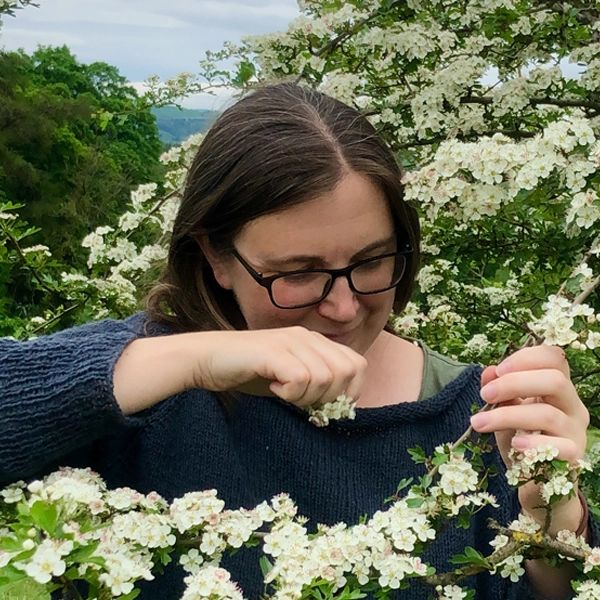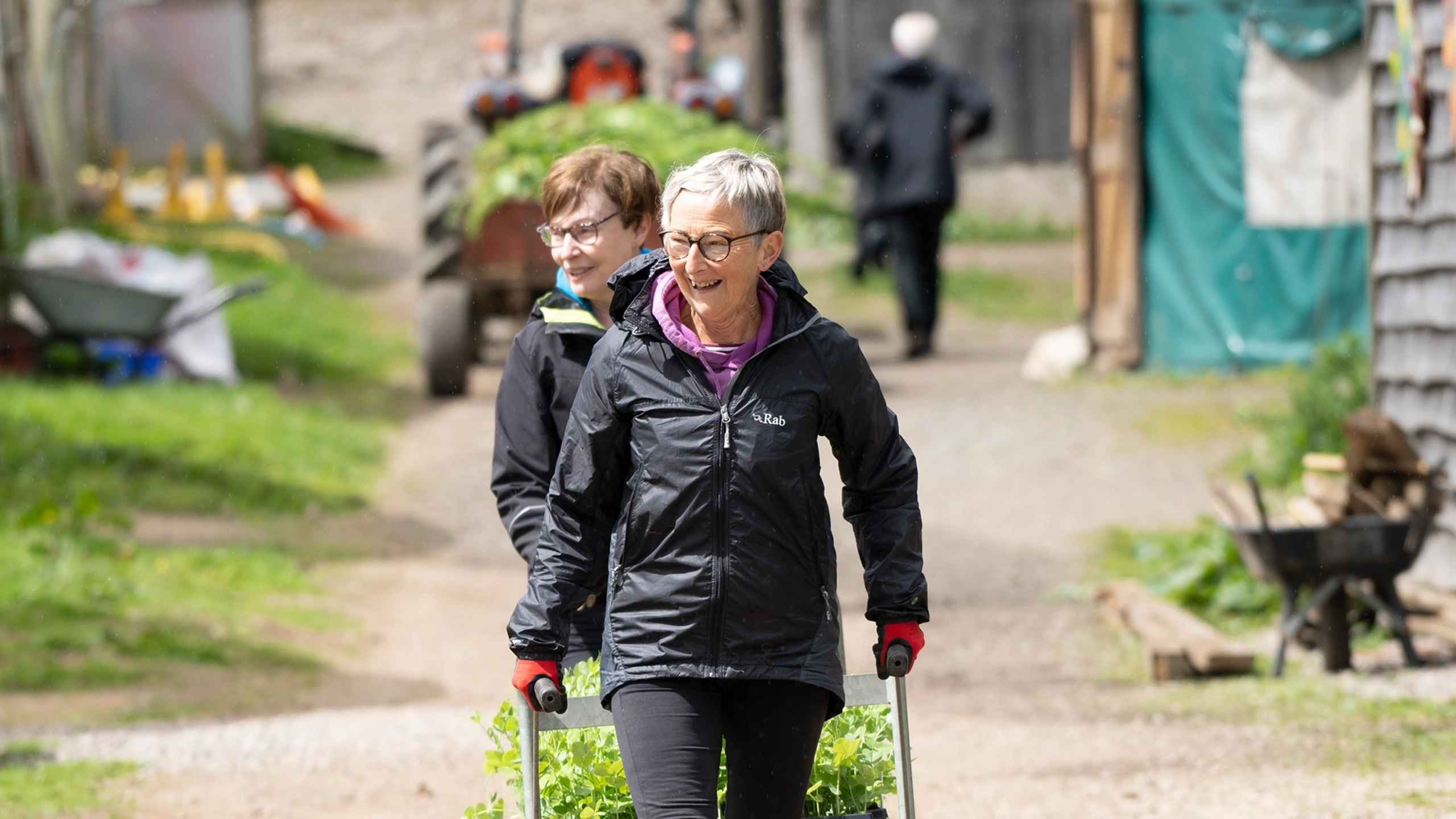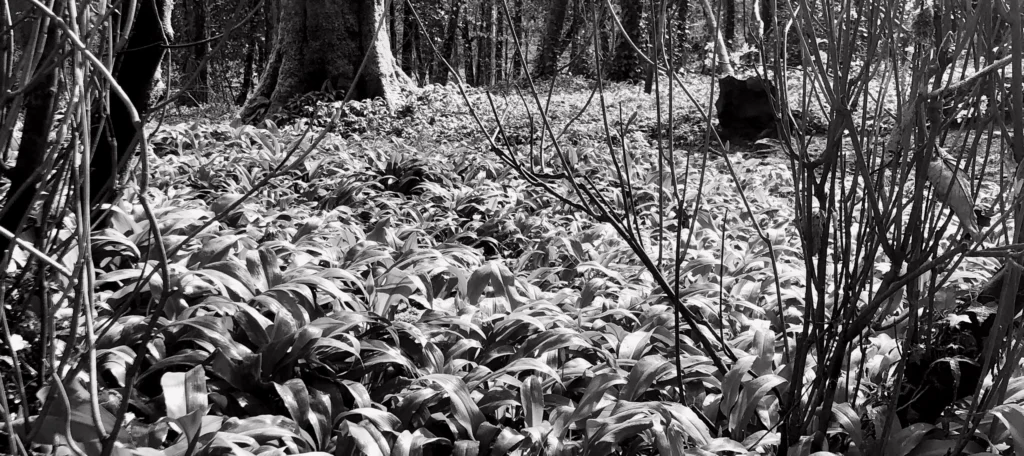
From flavoursome pick-me-ups to healing remedies, you can find all sorts in your hedgerows – or even on the supermarket shelves. Herbalist Dr Suzi Richer shares her foraging know-how.
It’s said that wood warms you three times: when you chop the tree down, when you split the wood and, finally, when you burn it. I like to think of herbs and healing in a similar way, as there’s potential for herbs to heal when you’re out picking them, when you’re making something from them and when you take them.
When you’re out gathering wild food, check your identification, only wander on public land, pick above the ‘dog wee zone’ and never take more than one third of the harvest.
JANUARY
Ginger (Zingiber officinale)
A simple infusion of two or three slices of fresh ginger in a mug of boiled water can help get your circulation and digestion going in the morning, or help you if you have digestive discomfort after a meal.
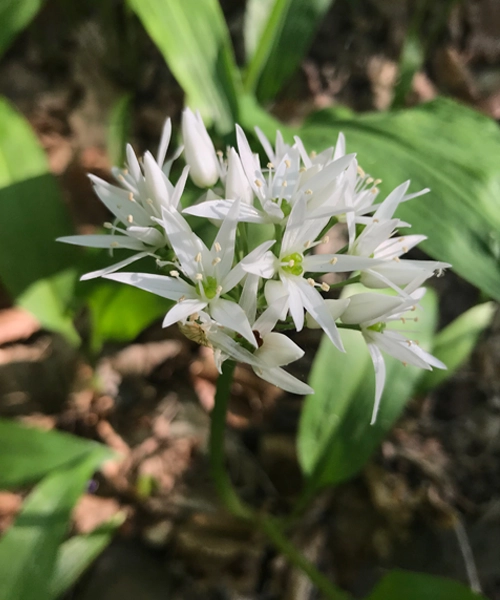
FEBRUARY
Fermented wild garlic budsoxymel (Allium ursinum)
When the first wild garlic leaves appear in February, I’m usually still using the fermented buds from the previous year as garlic is antimicrobial against coughs and colds.
Use a clean jar with a rubber seal and fill with wild garlic buds, mix honey and apple cider vinegar in a ratio of 1:2 and cover. Leave for a month. Use the buds on salads, and take a teaspoon of the juice three times a day when you have a cold.
MARCH
Cleavers tonic (Galiumaperine)
This is a refreshing and cleansing drink after the winter when bodies need livening from the Winter’s stagnation. It’s also delicious.
Pick a small bunch of cleavers and twist them into a loop which will fit inside the top of a wide-mouthed jar, jug or pint glass. Fill the container with cold water. Place in the fridge overnight. Strain off the liquid in the morning, add a squeeze of lemon juice and drink during the day.
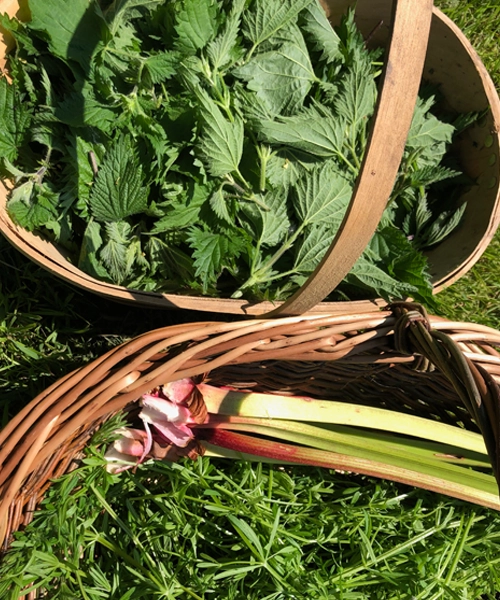
APRIL
Nettles as a vegetable (Urtica dioica)
Nettles are packed with vitamins and minerals and are one of the first edible ‘crops’ of the year. Find some nettles that are less than knee height, then, wearing thick garden or rubber gloves pick the top 8-10cm from each plant. You will need three good handfuls per person. Leave to wilt for a few hours, then fry them in some olive oil until they shrivel and shrink in size. Add ½ tsp dark brown sugar and a 1 tsp of soy sauce for the last few seconds of cooking. Serve as a delicious and nutritious vegetable side dish.
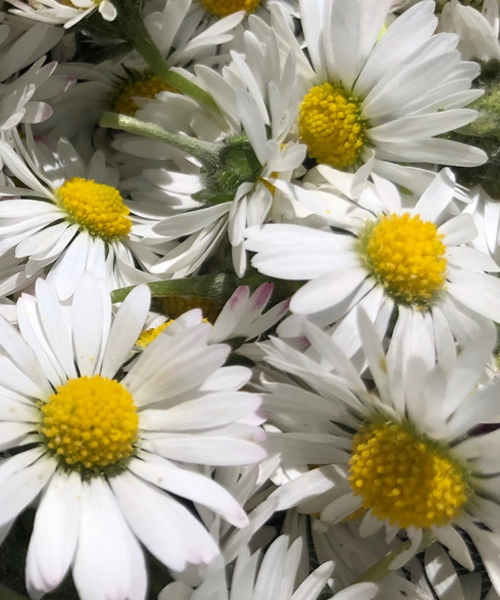
MAY
Daisy oil for bruises (Bellis perennis)
This pretty and unassuming little flower is a potent healer of bruised skin. On a sunny, dry and warm day – after all the dew has gone – pick a jar full of daisies. You only need the heads. Let them wilt on a teatowel for a few hours, then pack them into the jar again and fill with a light olive oil. Leave the jar in a sunny place for between 2-4 weeks. Strain into a sterilised jar. Rub the oil on to bumps and bruises to help them heal. FOR EXTERNAL USE ONLY.
JUNE
Lime flower tea (Tilia spp.)
This delicate tea helps with stress, anxiety and sleep. Lime, or linden, trees can be found in parks or growing along many streets in towns and cities. Once you’ve identified one, keep watch in the last two weeks of June as the flowers will only be there for a few days. When they are, pick the bracts – the flowers and the paler papery leaves below them. They can be used fresh, or dry them in a warm dry place for Winter use. Infuse in a mug of boiling water as needed.
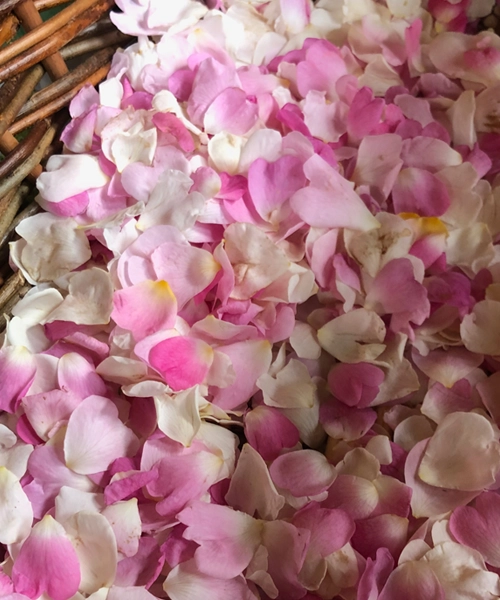
JULY
Rose elixir (Rosa spp.)
Rose is the perfect companion when you feel in need of a hug. Fill a jar with rose petals picked from the hedgerows on a dry and sunny day. Cover with honey and brandy in a ratio of 1:3. Leave for a month, strain. Take a teaspoon neat or in some warm water if overwhelm strikes.
AUGUST
Chamomile (Matricaria recutita)
Chamomile is lovely to grow over the Summer, but you need a lot of plants to keep you supplied, so finding a good shop-bought source of (ideally organic) chamomile tea is worth it. The tea will help relieve digestion discomfort, help with mild allergies, and is great for both internal and external inflammation. If you have an itchy insect bite, damp a tea bag and put it on.
SEPTEMBER
Calendula (Calendula officinalis)
Another beautiful Summer plant and the flowers keep coming as you pick them. Dry the flowers thoroughly in a dehydrator or a low oven with the door ajar before storing or using for oil. Once dry, infuse the flowers in oil (see Daisy). This oil can be made into a balm by gently warming it with beeswax (8:1 oil:wax) in a bain-marie or water bath. Calendula soothes and repairs the skins, so it’s great for insect bites, stings and itchiness.
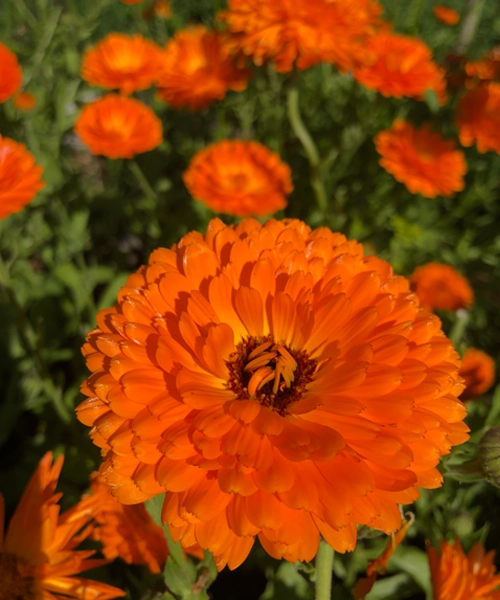
OCTOBER
Turkey tail (Trametes versicolor)
Make sure you double-check your mushroom identifications before picking. Turkey tail should have a wide underside and is found on dead wood. If you’re unsure, stick with supermarket mushrooms. All mushrooms help to give your immune system a boost, so include plenty in your diet. If you do find some turkey tail in the woods, boil it long and slow – a slow cooker is best – with some onions and carrots to make an immunity-boosting stock.
NOVEMBER
Hawthorn berry brandy (Crategus spp.)
Picking hawthorn berries on a Winter walk is lovely activity to do when there’s not much else to forage. Hawthorn is a tonic for the heart and can help to regulate blood pressure. I love sipping this on a cold night in front of the fire. Fill a litre Kilner jar with 450g of berries, 225g sugar, and 600ml brandy, shake daily for a week and leave for two months in a dark place. Strain and bottle.
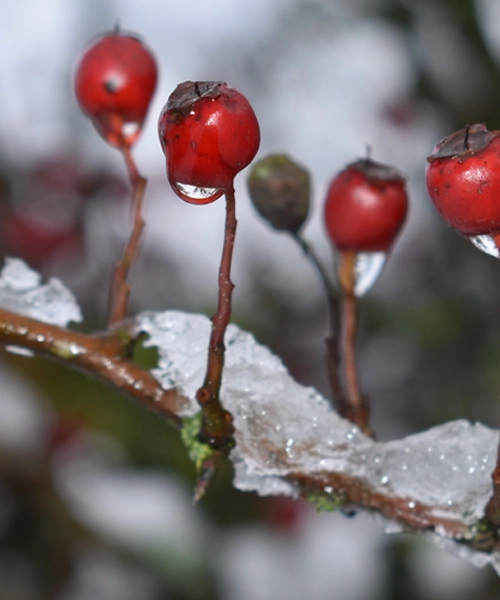
DECEMBER
Cinnamon (Cinnnamomum verum)
Cinnamon has many benefits, colds, digestive discomfort, diabetes, nausea, and it’s gently warming throughout the winter. Incorporate into porridge, hot drinks or stewed apple instead of sugar for a health-giving burst of sweetness.


